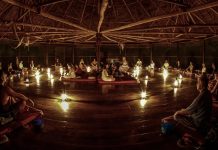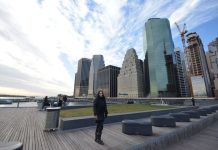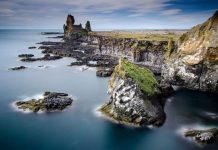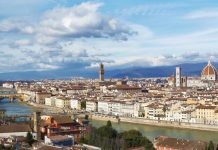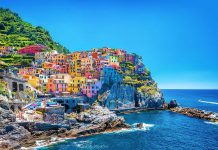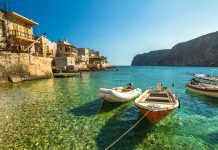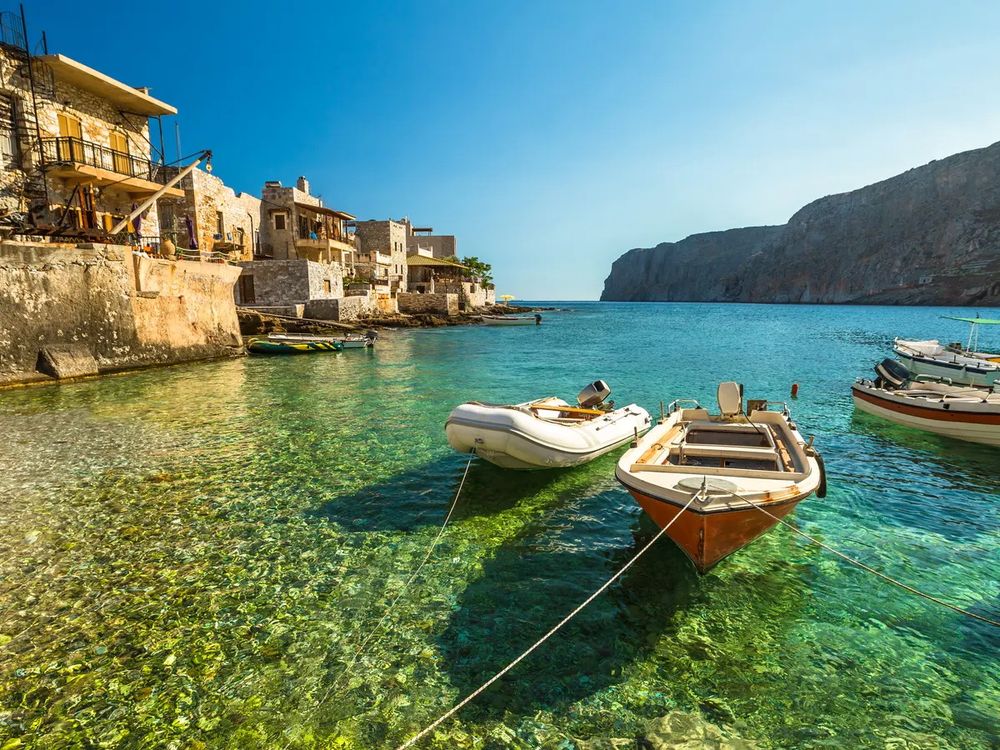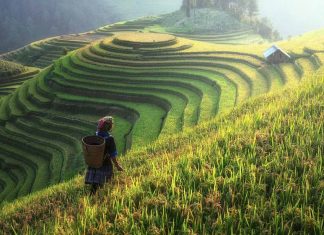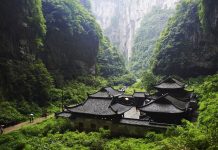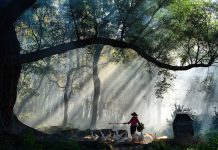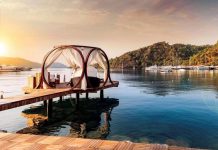Amasya is a tale of two shores. On the northern bank of the Yeshilyrmak River, rows of half-timbered Ottoman houses stretch, standing so close to each other that it resembles chocolate cupcakes in a pastry shop window. On the southern shore, a new, more advanced Turkey is trying to fit into reality, preserving the continuity of the empires that ruled in this narrow rocky valley.
Above the minarets and madrasahs rise the marks of Pontic tombs carved on high cliffs and guarded by a majestic citadel. The reality surrounding Amasya could initiate a fair amount of passion, but life here unfolds as slowly as a train takes apples out of the city through a tunnel punched in the mountain. Local legend has it that these tunnels were dug by Ferhat, an unhappy lover who was tragically in love with Shirin, the sister of the sultan’s wife.
History
The area of Amasya, which the Hittites called As a mouse, was inhabited since 550 BC In the IV century BC.
Amasya was conquered by Alexander the Great, then it turned into the capital of the kingdom that became his successor, ruled by a family of Persian satraps. By the time of the reign of King Mithridates II, the Kingdom of Pontus had entered its golden age and controlled most of Anatolia from its capital in Amasya.
During the late period of prosperity of the Pontic Kingdom, the world’s first geographer, Strabo, was born in Amasya. Having traveled through Europe, Western Asia and North Africa, Strabo wrote 47 books on history and 17 on geography. Most of his works on history have been lost, but we still have an idea of their content from quotations in many works of other classics. Strabo left a description of the Amasya period of Roman rule, which began here in 70 BC.
The golden age of Amasia continued under the Romans, who called it the “First City” and used it as an administrative center for rulers such as Pompey. It was the conquest of the local city by Julius Caesar that prompted him to the immortal phrase “Veni, vidi, vici” – “I came, I saw, I won”.
After the Romans, the Byzantines, the Danishmendids and Seljuks, the Mongols and the inhabitants of Baghistan province successively came. In Ottoman times, Amasya was an important military base and a place of training for the sultan’s heirs; it also turned into a center for the study of Islam. By the 19th century, 2,000 theologians were studying in 18 madrassas of the city.
Here, after the First World War, Ataturk met with his supporters, and here he developed the basic principles of the struggle for the independence of Turkey, which formed the basis of the published Amasi circular.
Attractions
Tombs of the Pontic Kings
A vertical rock with the tombs of the Pontic kings carved into it attracts attention looms over the northern bank of the river. Deeply embedded in limestone dating back to the IV century BC, the tombs were used as a place of worship for deified rulers. More than 20 tombs have been found in the valley, and they look especially striking when viewed from the southern bank of the river.
Climb the stairs from the souvenir counters to the ticket office. Beyond it, the path branches off: turn right to explore the most spectacular tombs, as well as to appreciate the panoramic views of Amasya. Turn left onto the remains of the baths of the Maiden’s Palace, built in the XIV century, and then you can go through a tunnel cut into the rock to a couple of other tombs.
Khatuniye Quarter
Directly to the north of the river is the Khatuniye quarter, the most remarkable collection of restored Ottoman houses in Amasya, interspersed with high-quality modern copies, making the overall look complete and harmonious.
Immediately behind the staircase leading to the Pontic tombs is the Hazeranlar mansion, built in 1865 and restored in 1979. It was built by the accountant of the gubernatorial poet Zia Pasha Hassan Talat for his sister Hazeran Khanim. The restored rooms are beautifully decorated in the style of that time, their candelabra and wood carvings evoke refined feelings; models illustrating the use of them are presented in the rooms. Various exhibitions are organized in the gallery of the Department of Fine Arts located on the ground floor.
Harshen ‘s Castle
Perched precariously on the top of Harshena Mountain, the citadel provides an opportunity to appreciate the magnificent views of the valley. The remains of the walls date back to the Pontic period, possibly to the reign of Mithridates, but the fortress has been here since the early Bronze Age. The citadel was repeatedly destroyed and restored during the change of empires, eight layers of fortifications were found in it, descending to the Yeshilyrmak River at 300 m, and a tunnel with 150 steps was cut through the rock.
On the ledge immediately under the fortress is an old Russian cannon, a shot from which during the holy month of Ramadan for Muslims is a signal of the end of the day’s fasting.
Although Calais is popular with families, travelers of both sexes are strongly advised not to wander there alone in the late afternoon. To get to the castle, turn left and when you reach the Buyuk Agha Madrasah, follow the road for about 1 km to the street on the left marked with the “Kale” sign. It is 1.7 km up the mountain slope to the parking lot, and then it will take about 15 minutes along the steep path to the top.
Byuyuk Agha Madrasah
Behind the Kunch Bridge there is an impressive building of the Buyuk Agha Madrasah. Octagonal in plan, which is rare in the architecture of the madrasah of the Ottoman era, it was built by the head of the white eunuchs of Sultan Bayezid II Hussein Agha, also known as the Great Agha. The seminary for boys preparing to become “Hafiz” is still located here, so the building is closed to visitors.
Amasya Museum
On the second floor of this excellent museum there are beautifully placed exhibits that tell in detail about Amasya and the surroundings of the Bronze Age, the Hittite, Pontic and Roman eras. Pay attention to the famous statue of Amasya, a bronze figure of the Hittite thunder god Teshub in a conical hat, with almond-shaped eyes. All showcases are provided with detailed labels in English. Upstairs there is an extensive collection going back to the later periods of history, with voluminous manuscripts, Ottoman artifacts and a whole arsenal of flintlocks. In the center of the hall there are original wooden doors from the Gek Madrasah in Amasya, combining features of Seljuk and Ottoman styles in the carving.
Also upstairs is the main treasure of the museum. In a separate hall there is a unique collection of mummies from the period of the Ilkhans, XIV century. Bodies mummified without removal of organs were found under Burmali Minare jami. Keep in mind that the spectacle is not too suitable for young eyes.

